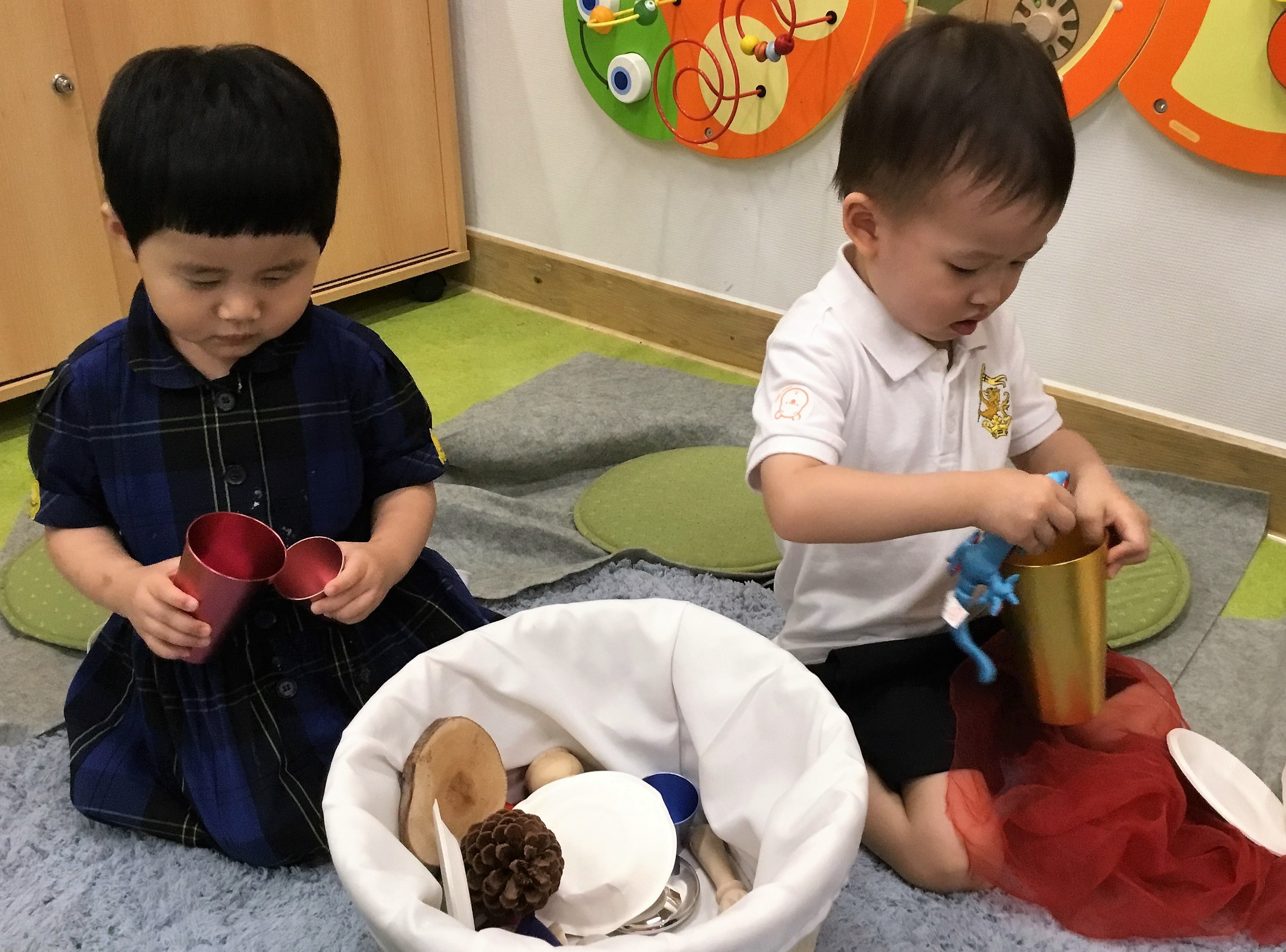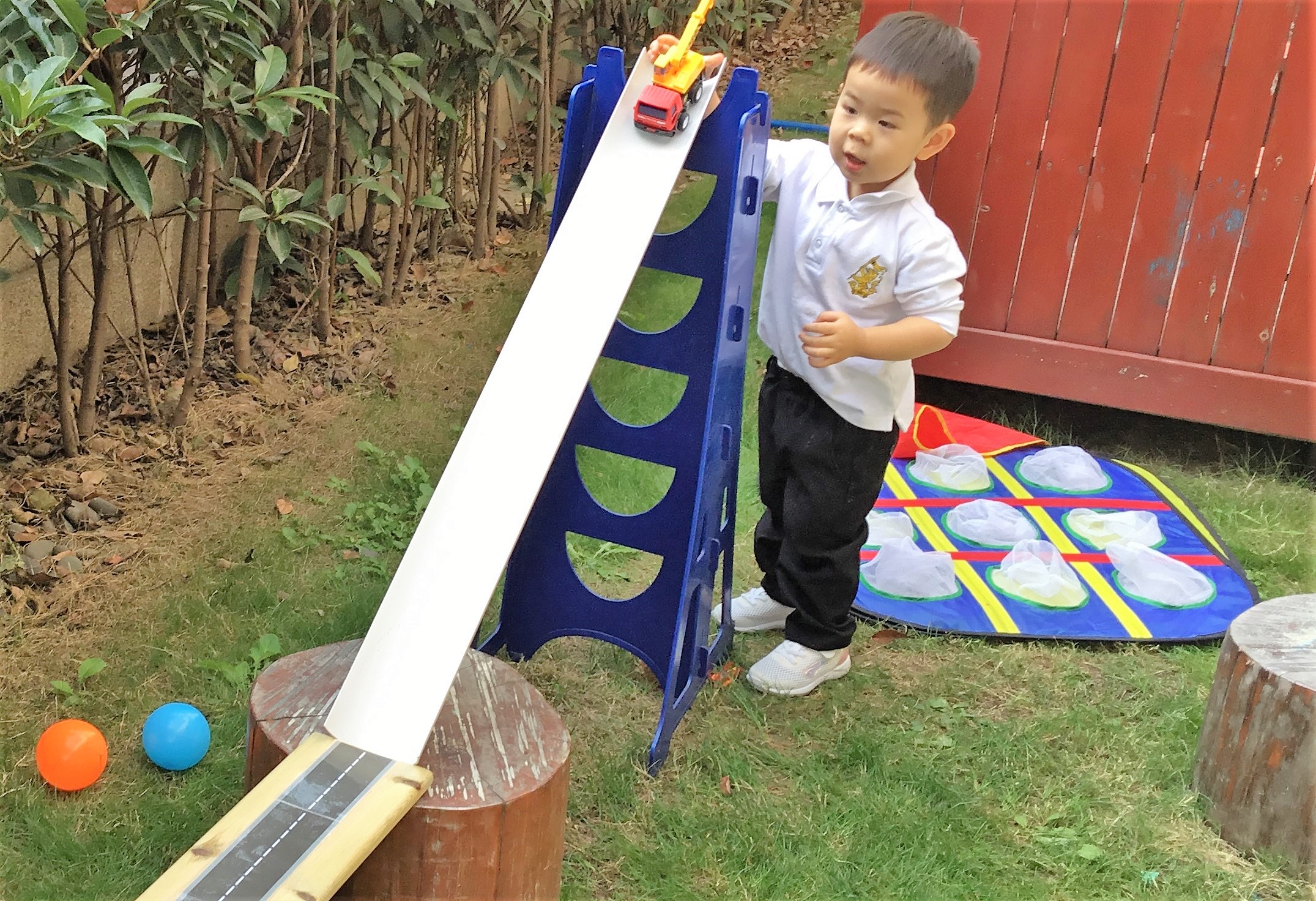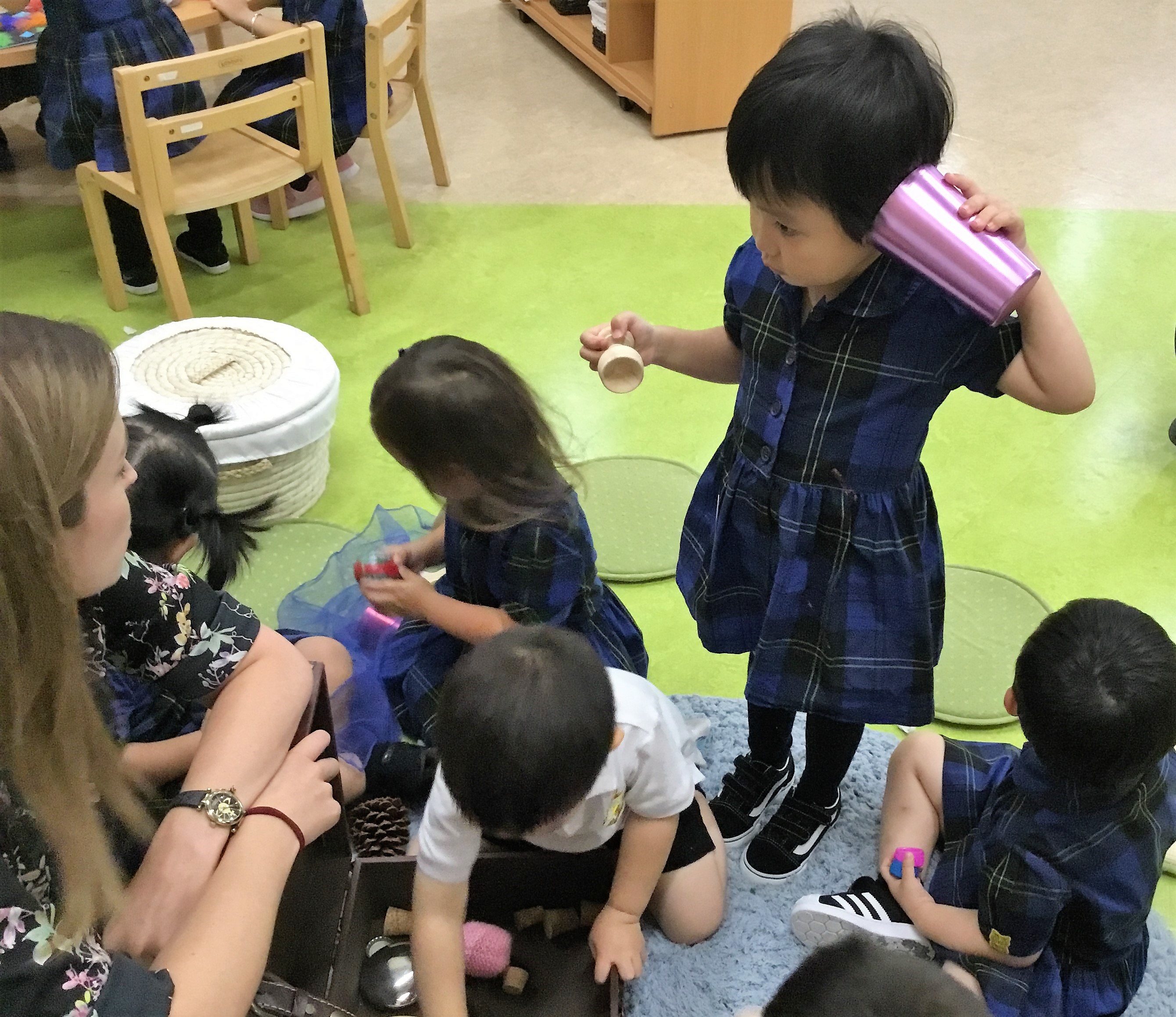
When you observe any number of young children at play, you will see that their behaviour patterns are diverse. The differences in their behaviour come from their choices of toys, how to use said toys or objects in their playtime and their differing ways to deal with relationships with their peers. From their parents’ perspective, what they see is that their children can arrange toy cars in a long line or frequently put various toys in a box.

However, what their teachers observe is that those children can demonstrate positioning (i.e. the children can be seen positioning, ordering and arranging objects or themselves, e.g. on top, behind, beside.) and enveloping (children are observed covering objects or themselves with materials). They also enjoy filling in containers with natural materials and other objects as well as emptying them, which are methods of schematic play.
What exactly is the meaning of schematic play?
“Schematic play represents children’s logical and repetitive behaviours.” Children of a young age often exhibit a strong desire make repeated actions, such as moving an object from one place to another, lining up toys, putting things in to a container, pulling a toy car around in a circle, and so on. These schematic learning behaviours can often be observed in their daily play sessions. If adults can identify these different schematic play behaviours, they are able to effectively develop children’s deep-level learning while taking their age and behaviour rules into consideration.

Some of the most common types of observed schematic play include transporting, rotation, enclosing, enveloping, connecting, positioning and trajectory. Take Hiba Nursery pupils for example. Pupils were provided with some jars, beans, spoons and scarves in one of their group activities. If adults were to be offered these objects, it is probable that they would put them back after browsing all the various things. How did our pupils respond? They were curious about these things once seeing them and could not help fiddling with these objects. Some pupils put the beans in the jar and shook it to listen to the sound they made; others constantly stirred the beans with the spoon; some pupils wrapped the beans with a scarf; and others piled the jars up and knocked on them with a spoon.

When pupils are absorbed in a certain activity, they will show their keen interest in exploring it and become creative players in their repeated schematic activities. Experienced observers play a key role in such conditions. If they do not understand features of young children’s schematic behaviours, they may regard it as being aimlessly playing. In fact, many detailed things in children’s play sessions deserve our focused attention, such as stirring and stacking actions, the loud and low sounds during the process of activity and opening and closing the lid of a jar. Only then, can we take opportunities to further support their development of fine motor skills as well as expanding their knowledge of positioning and also language.